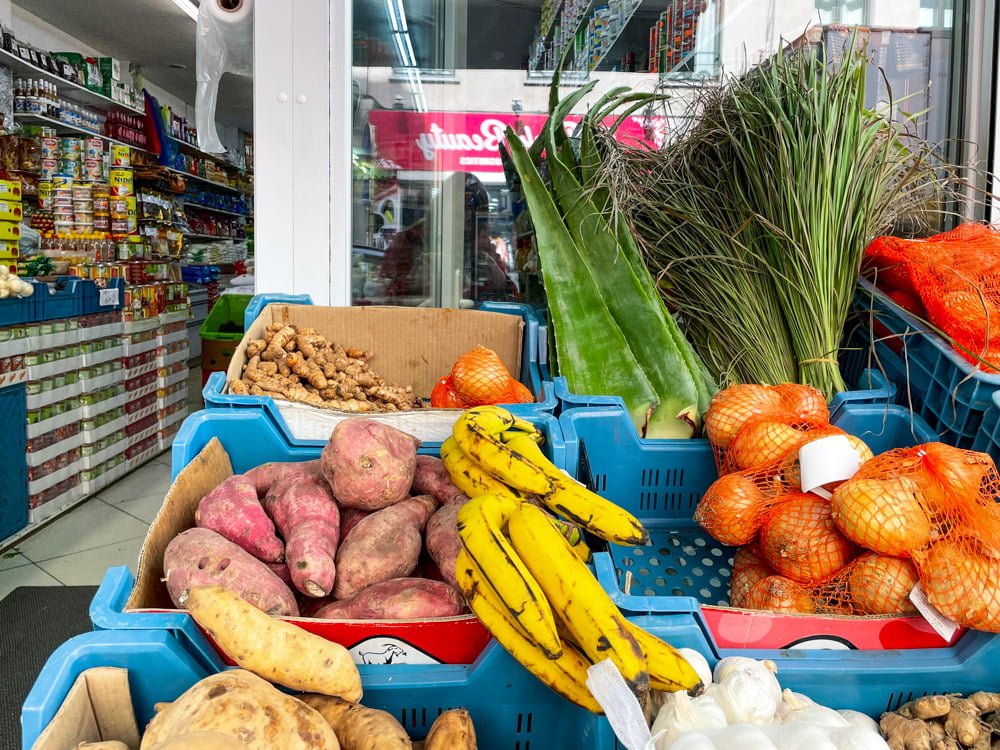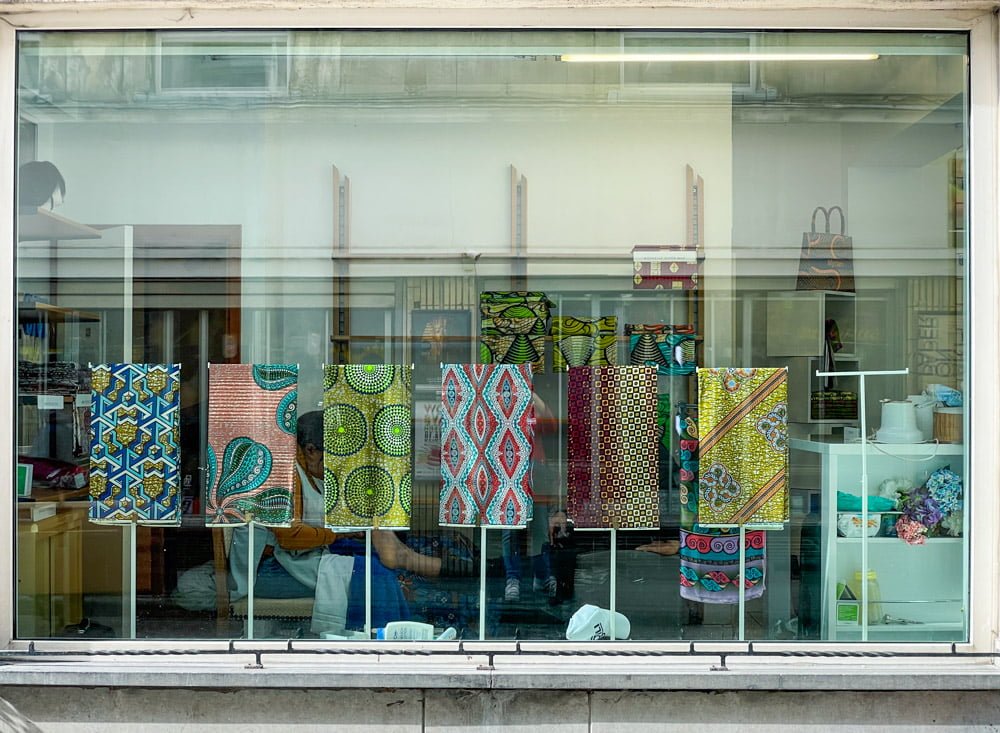Matongé, a couple of streets and galleries located in the heart of Brussels, is a neighbourhood that stands out from the rest of the Belgian capital. It is known for its unique character with African flair, quite different from the European office workers and expat-populated surrounding areas. In this article, you will discover the scents and colours of Africa that make Matongé a special place to visit.
Table of Contents
About Matongé
Matongé is the meeting point of the African community in Brussels. After the classic sightseeing tour of museums, chocolatiers and breweries, a tour in this neighbourhood is one of the most exciting activities in the Belgian capital. With its fascinating mix of African cultures, Matongé looks completely different from the rest of the city. Although its adherence at the Ixelles district, a stone’s throw from the European Parliament, it feels like being on another continent.
PLAN YOUR TRIP TO BRUSSELS
Make the most of your trip to Brussels by purchasing the Brussels City Card online. With access to the city’s top museums and free public transport, it’s the smartest way to explore the city and save money.
To stay connected in Brussels, purchase an Airalo eSim online for phone and data coverage during your trip to Belgium.
The streets of Matongé are full of colours, food and shops, utterly different from the rest of Brussels. Here, you can find wigs, African wax textiles, and unknown fruits in European kitchens. The most curious aspect is that this neighbourhood is right in the centre, just a few steps away from Avenue Louise, one of Brussels’s most expensive shopping streets.
How the Matongé district has developed
The name Matongé comes from a neighbourhood in Kinshasa, the capital of the Democratic Republic of Congo. Congo’s ties with Belgium are very close because it was first a possession of King Leopold II and then a Belgian colony, as you can discover with a visit to the BELvue Museum. After independence in 1960, there was a large influx of Congolese students to Brussels. An authentic African quarter developed around the Maisaf hostel, the Maison Africaine founded by the aristocratic philanthropist Monique Van der Straten in 1961.
The hostel became a meeting place for existing African and Congolese students. A community developed in the streets around the Chaussée de Wavre with nightclubs, bars and shops. In addition to the first Congolese, other African immigrants later arrived in Matongé. After the first wave of migration, the area was too expensive for people from Africa for decades. Still, it remained a meeting place for shopping and eating.
The neighbourhood was not always as quaint and pleasant as now. In the 1990s, there were many clashes, social tensions, and problems with delinquency on the streets. For this reason, Matongé was considered a dangerous area for many years. Today, things have changed, and Matongé is back to its former glory. In the neighbourhood, you can hear several African languages spoken, and the area is full of African shops and restaurants that attract tourists.

Why visit Matongé on your trip to Brussels
Matongé is not one of Brussels’ classic tourist attractions. A visit, however, gives you a deeper insight into the Belgian capital in all its facets. Over the years, the district has changed a lot and is still evolving.
In addition to the Congolese community, which is the largest, Matongé welcomes people from all over Africa. Many residents come from Rwanda, Senegal, Guinea and Cameroon, creating a unique cosmopolitan atmosphere. You might even feel lost because sometimes you feel like you are in any African capital instead of Brussels.
The neighbourhood is the perfect place to shop for African food and clothes. It is probably the only place in Brussels to buy fruit and vegetables such as cassava, yam, plantains or spices. Apparently, the peanuts for sale in these shops are delicious, but I have yet to taste them. Or you can buy some fantastic wax fabrics and have a spectacular custom-made dress sewn.
In the evening, the neighbourhood comes alive with restaurants and live music. I discovered Matongé through an African dinner with a friend living in Brussels. I experienced the unique flavours and atmosphere of the area, only to return during the day to see the neighbourhood from a different perspective.

Where to get to Matongé in Brussels
Matongé is not a real neighbourhood or district. It runs along Rue Chaussée de Wavre and Ixelles and Porte de Namur shopping galleries. You can recognise the area because the classic Brussels businesses and shops give way to numerous hairdressers, cosmetics, wig shops, wax fabrics, African restaurants, travel agencies, money transfer offices and grocery shops specialising in tropical fruit and vegetables. In any case, type Matongé into Google Maps, and you will arrive in the right place.
Where to stay in Brussels
Brussels offers a variety of accommodation options. If you’re looking for a hotel in the city centre, I recommend the Pillows City Hotel Brussels Centre. It is just 100 metres from Brussels Central Station and a 5-minute walk from Grand Place and the Manneken Pis Statue. For a charming and authentic experience, you can stay at the Happy Guesthouse in a typical townhouse with an Art Nouveau façade. They serve a delicious homemade breakfast made with Belgian products. In the European Quarter, Ambiorix Residence is a great option. They offer rooms with private bathrooms, a shared kitchen, and a lounge area.
If you’re planning a trip to Brussels, I highly recommend adding Matongé to your list of places to visit. This vibrant neighbourhood comes alive in the evening, and you can indulge in a delicious meal featuring traditional Congolese recipes at one of the many African restaurants. Exploring this area or taking a stroll along Chaussée de Wavre during the day will allow you to discover a lesser-known side of the Belgian capital.
